THE FUTURE OF MEDIA AGENCIES & THE MARKETERS
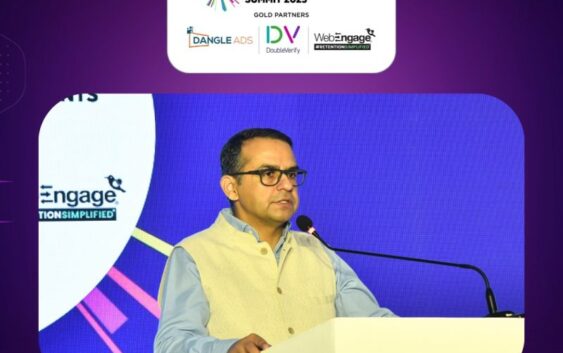
So, how will tomorrow’s media agencies be different? What will they focus on to meet the needs of today’s marketers? What technologies will they adopt? What skills will they employ? Listen to the voices of India’s media agency community to find answers to these questions and more at e4m confluence 2023 – All about Media Investing. The theme of the second edition is ‘Media Services: Unlocking Returns, Recall, and Tech Revolution’

A media agency is more than simply an office; it’s a place where connections are formed, and some of them stay a long time. Brands are striving for ROI in a world driven by technology advancements, changing customer behaviours, and cost pressures. If they don’t see it with their present spouse, there are plenty of others eager to dig into the pie. As a result, media agencies’ ability to change, adapt, and be adaptable is becoming increasingly vital.
The exchange4media Group’s second edition of e4m Confluence- The Media Investments Summit assembled industry experts and top leaders from the advertising and marketing ecosystem under one roof and shared their insights on a wide range of topics such as –
1. Diversity and Inclusion- the Bedrock of Future of Media Agencies.
2. Integrated Media Agencies vs Digital specialists – how will the future evolve?
3. What will it take to attract top talent into Media Agencies?
4. Decoding Client – Agency Relationship.
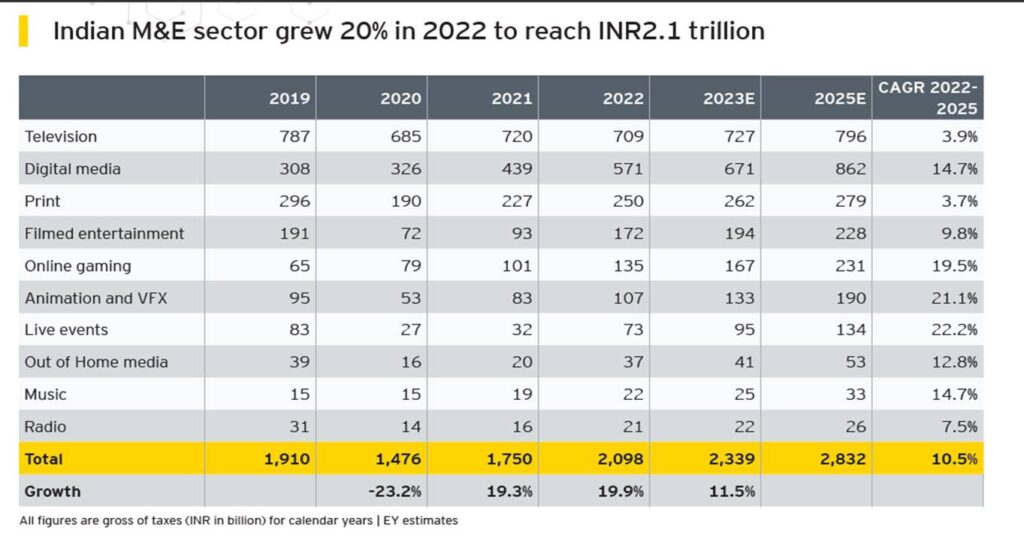
The Indian media sector has grown significantly over the years, owing to technical improvements, fast internet penetration, and the rise of digital media consumption. It is becoming increasingly crucial for media agencies to change, adapt, and be adaptable in today’s highly competitive economy.
Today, media companies are increasingly relying on data analytics and artificial intelligence to optimise advertising and content. Furthermore, companies want to integrate their products or services into popular content, which necessitates the skills of media agency. Top industry executives discussed the summit’s development and future, the necessity for agencies to adapt to the demands of marketers, the technology they must acquire, the talents they must employ, and more.
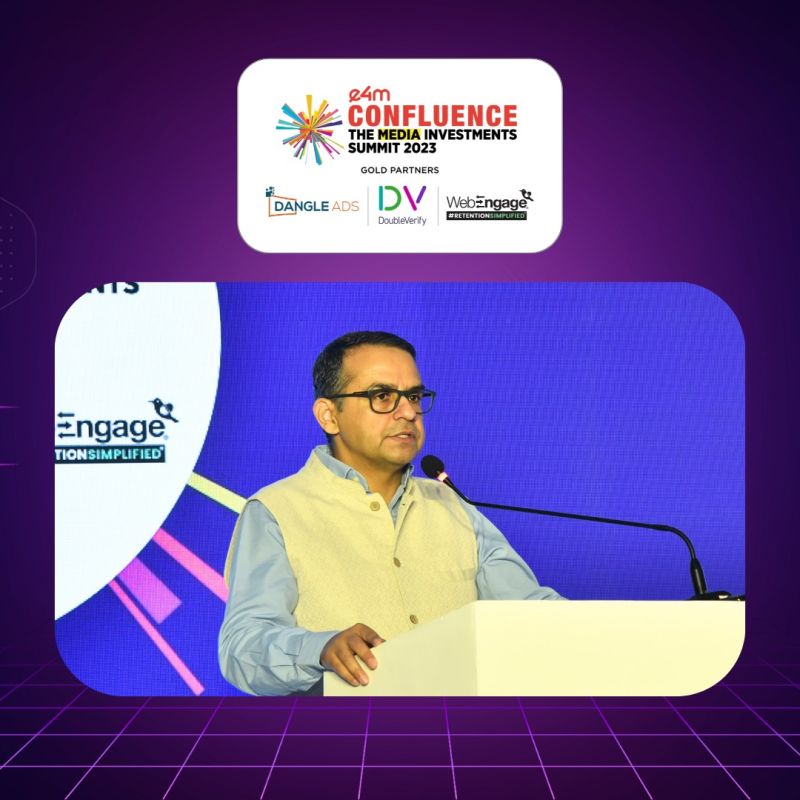
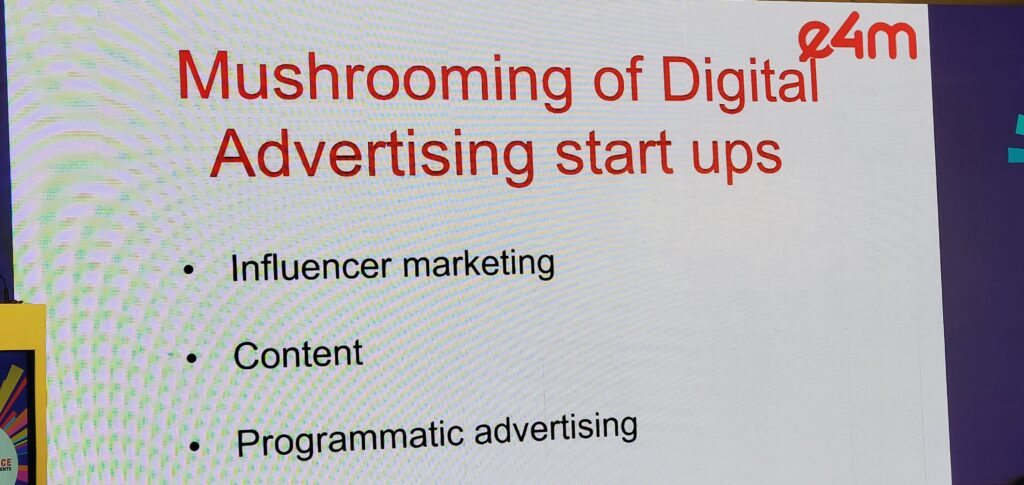
Nawal Ahuja made important observations on the D2C startup scenario and as the D2C stratups are failing which have led to less advertising spend. The number of direct-to-consumer & brands has expanded dramatically in the D2C sector. According to KPMG, India’s D2C brand industry would be valued $100 billion by 2025. According to the research, India presently has over 800 direct-to-consumer (D2C) brands.
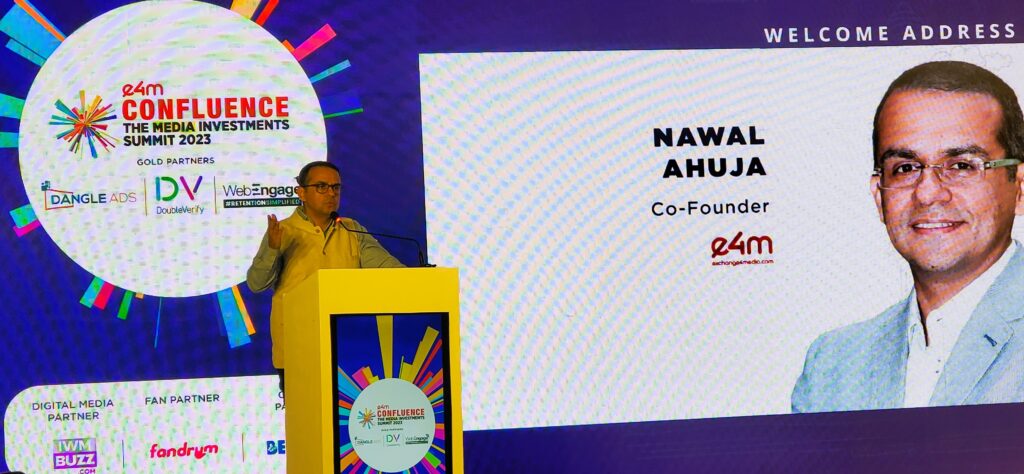
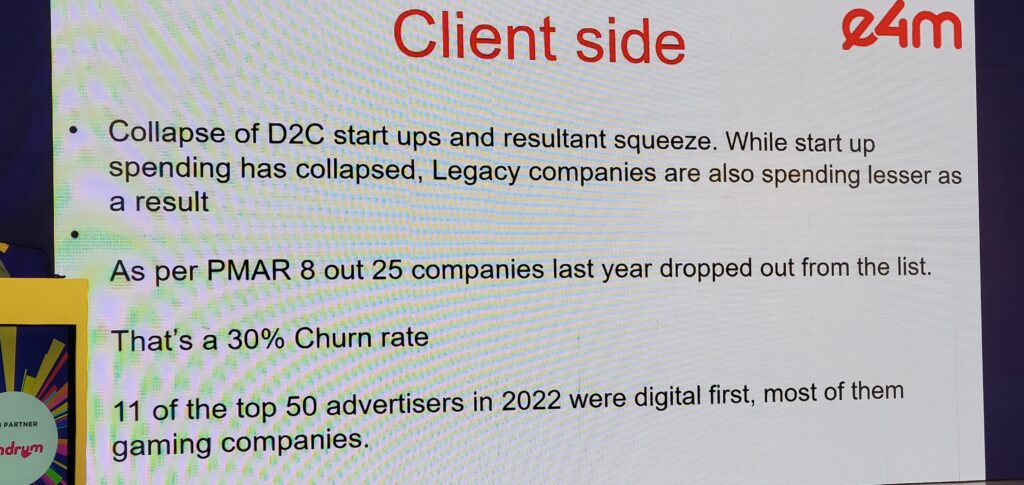
Nawal pointed out, the Millennial and Gen Z user bases, as well as the strong engagement on mobile gaming applications, are drawing advertisers and marketers from many industries. According to a recent InMobi survey, 98 percent of gaming marketers reported to have increased their expenditures on mobile game applications in the previous year, resulting in a stunning 2X rise in mobile gaming ad spends year on year. As mobile gaming applications have mastered the art of hyper-personalization by conducting targeted ads specific to each player based on their behaviour, location, and in-game choices, the gamer returns for more.
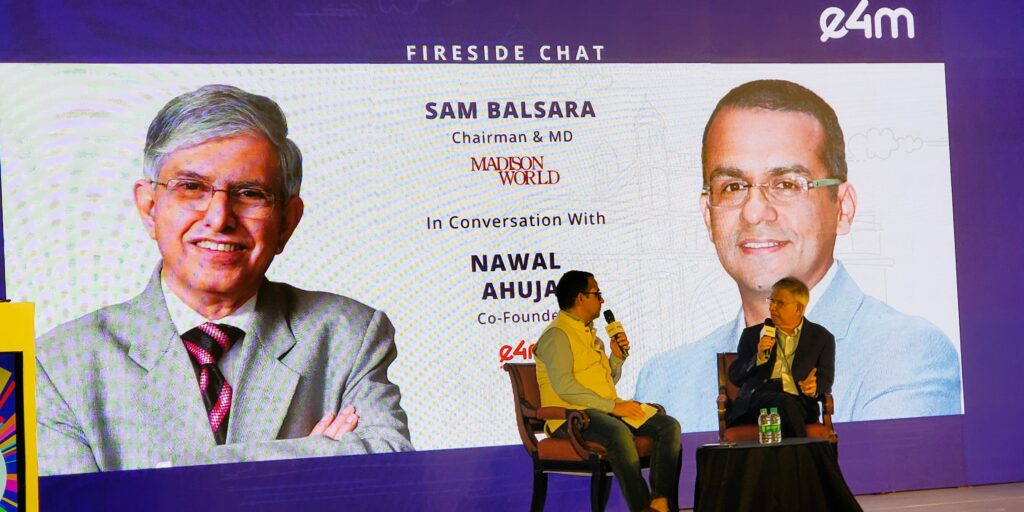
At the Fireside Chat – Future Proofing The Media Agency Sam Balsara, Chairman & MD, Madison World, said, “Necessity is the mother of invention, and big ideas work better than big budgets,” and stated that pay rules had been presented to AAAI members for the benefit of the industry as a whole, on what worked in favour of media agencies that the previous two decades have been so promising for this field. He also stated that a set of pay rules had been presented to AAAI members for the benefit of the industry as a whole and highlighted how marketing firms should train their marketing/brand managers to be concerned about whether their agencies are sufficiently rewarded to enable them to attract excellent people to create outstanding engaging advertisements that communicate well and sell their products to, chatting with the moderator Mr. Nawal Ahuja – Co-Founder, Exchange4media.
The discussion opened with a look back at the history of agency compensation. In the early days, agencies received a sizable 16.67% of what advertising spent, resulting in a strong business. However, as competition increased, customers were more selective in their agency selection, altering the power relations. Balsara explained that agencies had to react to the increased demand for their services, which resulted in a more competitive atmosphere. Back in the 1990s, he used the example of FMCG behemoth Procter & Gamble, revealing that the business had four agencies at the time, with each buying their own media for the brands they handled.
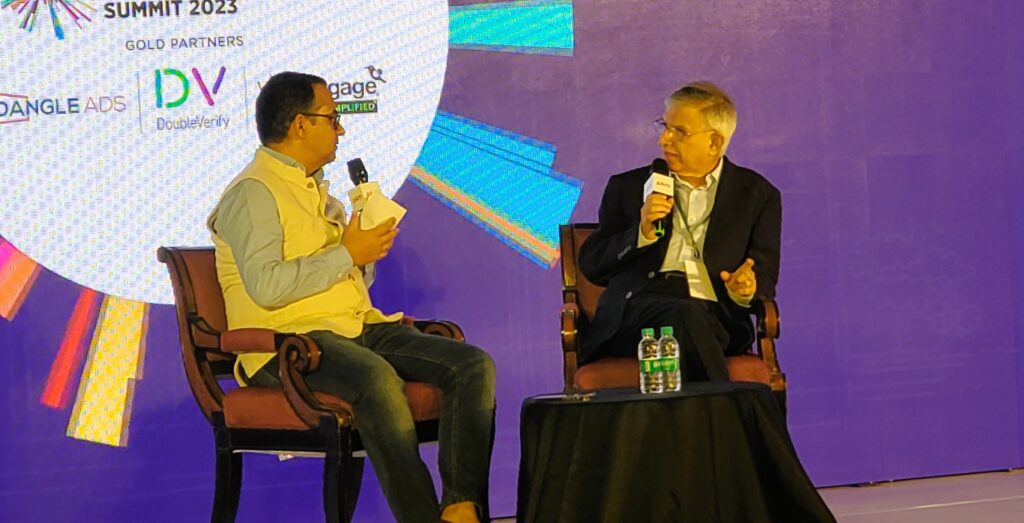
“It didn’t take too much of a genius to say, shouldn’t one agency buy all,” Balsara said.
“Having done that, obviously the client also wanted to protect the income of the creative agency. In the US, the market was billions of dollars and in India, it was around Rs 10,000 to Rs 15,000 crores. The same percentages that prevailed in the US market, were made applicable to the Indian market and the requirement imposed on the media agency was probably 5 times more than what the erstwhile full-service agency delivered in media,” he further explained.
Balsara explained that the notion of advertising agencies arose when newspapers first appeared on the scene and saw that in order to recover their expenditures, they might sell some space to manufacturers and make some money. Some producers were eager to exploit that area, but what would materialise in that space perplexed them.
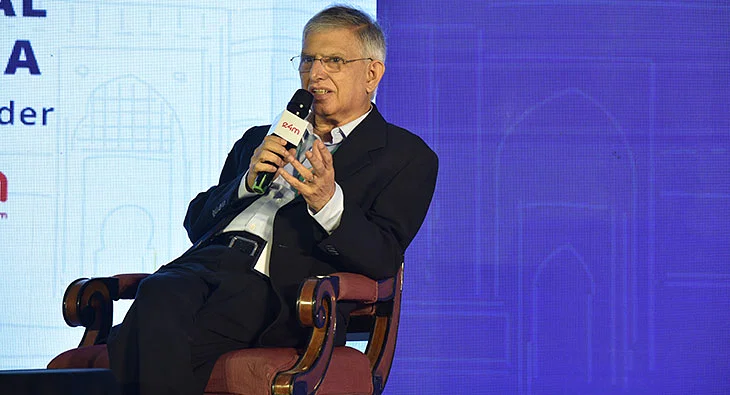
“Therefore the newspapers encouraged a bunch of young people with creative ideas to work out creative ads and take them to prospective manufacturers and advertisers so that the newspaper could fill the space,” Balsara mentioned.
Balsara stated, “Over the years, competition increased, agency services became popular, and advertisers realised that instead of simply using an agent pushed on them by the media owner, they had a better ability to evaluate which agency was good for them.” The debate focussed on the shifting dynamics of agency selection as agencies gain importance. Unlike in the past, when media owners forced agencies on advertisers, customers were now free to select agencies based on their track record and appropriateness. This transition represented a watershed moment, with advertisers actively appointing ad firms. “That is when the tables shifted and clients began to appoint advertising agencies,” he said.
The discussion also touched on the effect of cost-cutting efforts on the advertising environment. While cost-cutting is an important feature of business, it has caused issues for agencies, particularly in getting new business. The conversation then switched to the problems that agencies confront in terms of talent recruiting. Previously, organisations could employ from respected universities, assuring a consistent stream of competent people. However, the present emphasis on cost-cutting has resulted in a drop in personnel quality, making it difficult for agencies to attract qualified workers even from second-tier institutions. He said that throughout Madison’s first five years, the agency hired from universities such as Bajaj and MICA. . “However, since the last 10 years there is not a single student from MICA that an advertising agency can afford,” he added.
Recognising the need of collective action, he noted a recent joint effort within the industry to set pay norms. The goal is to reverse the tendency of cost-cutting and guarantee that agencies are fairly compensated. While noting the difficulties, the speaker expressed confidence about agencies working together to execute these recommendations in order to ensure their common existence and growth. “In the last 3-4 months, we have all put our heads together and developed a guideline, which we have issued to members of AAAI saying that look, for our own survival, clients’ survival and for growth of advertising, marketing & media industry, let us have a set of guidelines for remuneration,” he said.
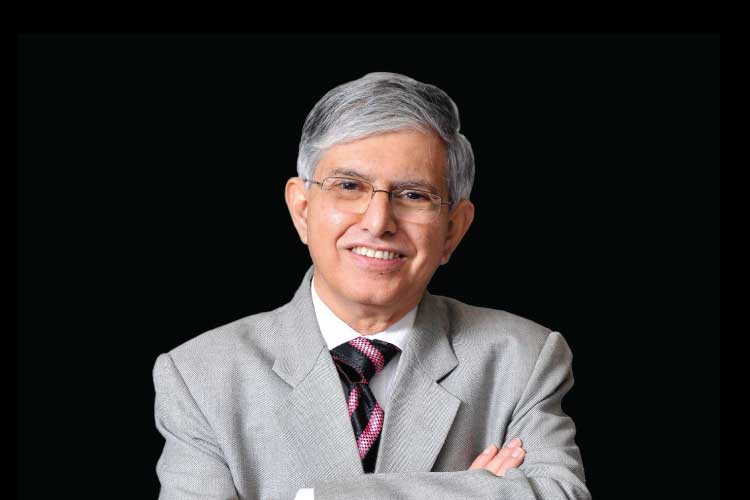
According to Mr. Balsara media agencies have done an admirable job in the last 20 years. “I think by and large the response of the media agencies has been far better than many other sorts of agencies, especially the creative agencies. So if we continue to be responsive and alert, I think the future of media agencies will be good and strong,” he said.
Balsara also made a connection between consultancies and advertising firms throughout the conversation. He emphasised the distinction in their business structures, with consultancies frequently asking greater fees for their services.
The discussion also included worldwide issues such as the growth rates of consultancy companies vs traditional agency networks. The speaker emphasised the necessity of agencies understanding their position in the knowledge industry and their capacity to charge reasonable fees for their expertise.
Finally, the discussion focused light on the many issues that advertising agencies face today, ranging from developing remuneration structures to talent recruiting roadblocks. The appeal for agency unity and a proactive approach to industry difficulties lays the groundwork for future change and growth in the ever-changing world of advertising.
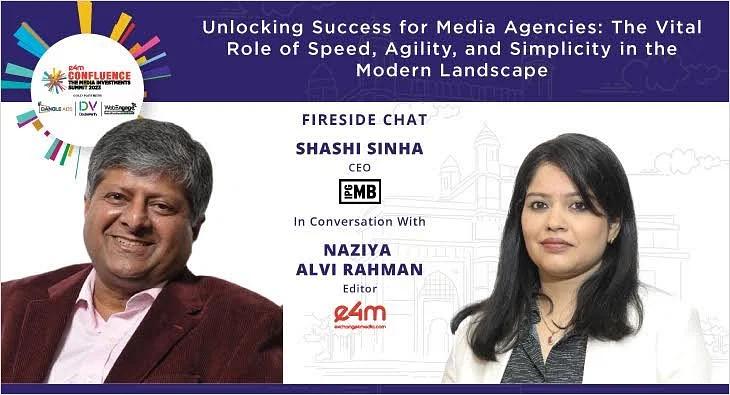
In a fireside Chat – Unlocking Success for Media Agencies: The Vital Role of Speed, Agility, and Simplicity in the Modern Landscape, Mr. Shashi Sinha, CEO, MediaBrands, India with Naziya Alvi Rahman, Editor, Exchange4media, said Consolidation will benefit everyone in the long as agencies are experiencing many challenges and shared his insights on the necessity of speed, agility, and simplicity in the success of agencies and on how the role of television has changed over the years: “India will always be a big consumer of content. I generally believe in the power of television, if TV adapts and if we at BARC India help them adapt in a particular way by giving them sizable meaningful cuts for segments.”
He went on to remark that most people are unaware of how large India is in terms of volume in comparison to the rest of the globe, and that India’s media is tremendously fragmented. He added, “The value is low, and the market is underleveraged. When using PPP (Purchasing Power Parity), our CPMs are maybe the lowest in the world, which is a good story for marketers. I tell all of my clients that now is the time to invest since things will be drastically different in the next 10-20 years, similar to the United States. As media agencies we are transacting those kinds of volumes, we need to have the bandwidth and the ability and no technology can provide for that.”
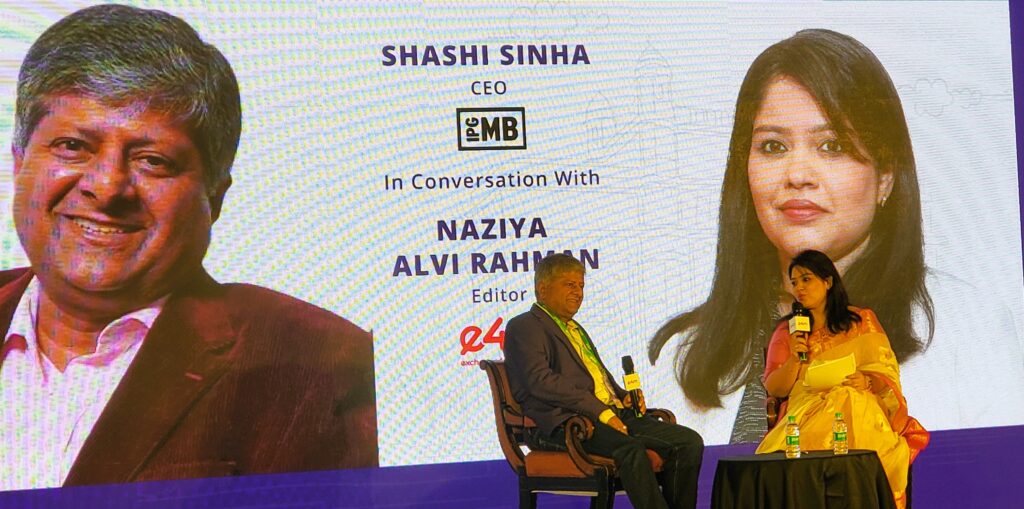
According to him, one of the challenges is the volume value mismatch. “We are probably responsible because, on the media agency side, there are six-seven of us who buy 90% of television. While we may feel very happy we are getting the best rates for our clients, fact is, we are transacting huge volumes.”
Sinha proposed three to four solutions to these problems. He added that a portion of it will be dealt separately. “With the expansion of MSMEs advertising, the value will begin to rise.”
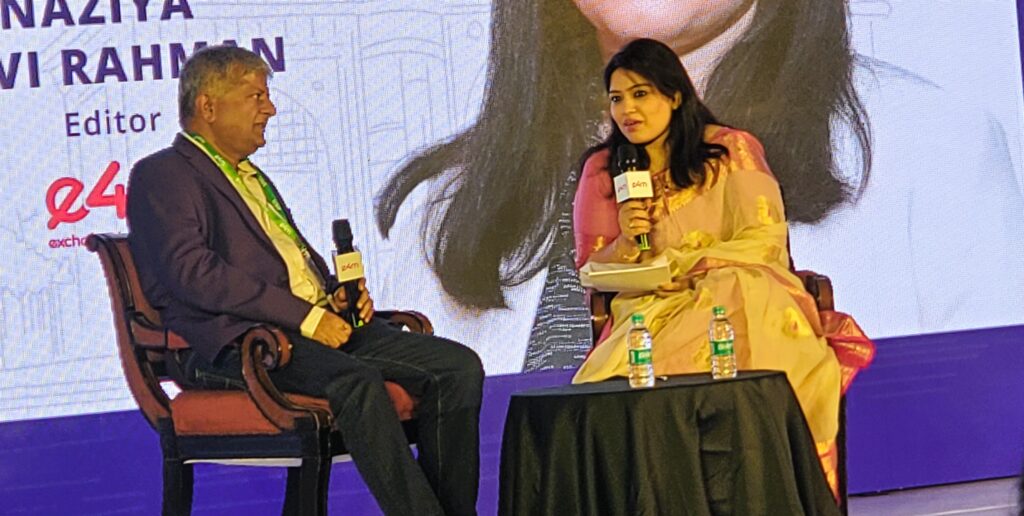
This may take some time to happen on television, but it is happening on supporting media. I believe that when the country opens up, the number of marketers increases, GDP rises, and a variety of new categories enter the advertising market. As a result, there will be a pull for advertising, and I believe consolidation will occur.”
As the market consolidates on the media and creative fronts, Sinha believes the consolidation is beneficial to the sector. He noted that while it may affect agencies’ short-term interests, it is a great move for the sector. “The consolidation already happened on the agency’s side now it’s happening on the media side.”
He stated that the issue is that the agencies are chasing quantities, and because their margins and commissions are so low, the whole focus is on quantity rather than quality, which is why quality is suffering. Speaking further on pay, he stated, without going into specifics. “We are already at it and finally the industry has realized that it’s important.” Sinha shared that in 2022 industry witnessed the maximum number of pitches called for and 80% of them were price-led, cutting either the pricing or commissions. “Better sense prevailed and a certain amount of course correction is happening around it,” he added.
Speaking on how the role of television has evolved over time, particularly with the introduction of digital, he stated that these are mediums and video consumption is what matters. It is not a case of television vs digital; it is just the mode of distribution. “India will always be a big consumer of content. I generally believe in the power of television, if TV adapts and if we at BARC help them adapt in a particular way by giving them sizable meaningful cuts for segments. The problem with TV is unlike digital that all the trading is done on the third-party currency which is BARC. It’s got so regimented that everything is CPRP nothing else matters.”
Speaking on the growth of the industry, he said it’s going to be a tough year. “Do things carefully and hope for the best because things are not going to improve overnight. For the next four to six months, just buckle up and don’t lose faith in your people; that’s the most important thing,” he concluded.
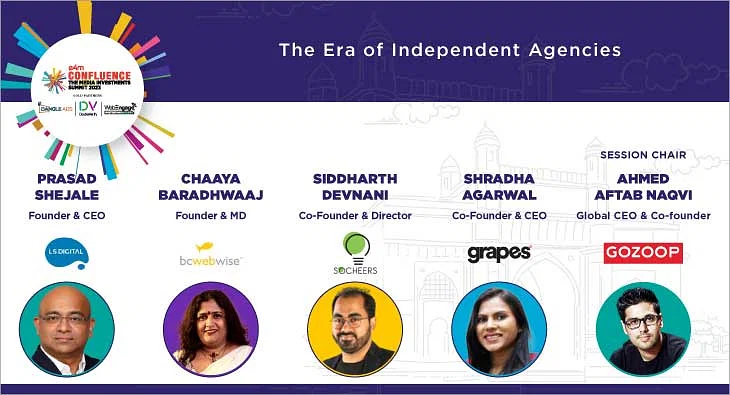
An exciting panel discussion on The Era of Independent Agencies with Prasad Shejale Founder & CEO, LS Digital, Chaaya Baradhwaaj Founder & MD, BC Web Wise, Siddharth Devnani Co-Founder & Director, SoCheers, Shradha Agarwal Co-Founder & CEO, Grapes, Session Chair : Ahmed Aftab Naqvi
Global CEO & Co-Founder Gozoop, had an in-depth discussion about how, in today’s changing advertising market, customers value the agility, innovation, and knowledge that independent agencies give. Is this, then, the ‘Era of Independent Agencies’?
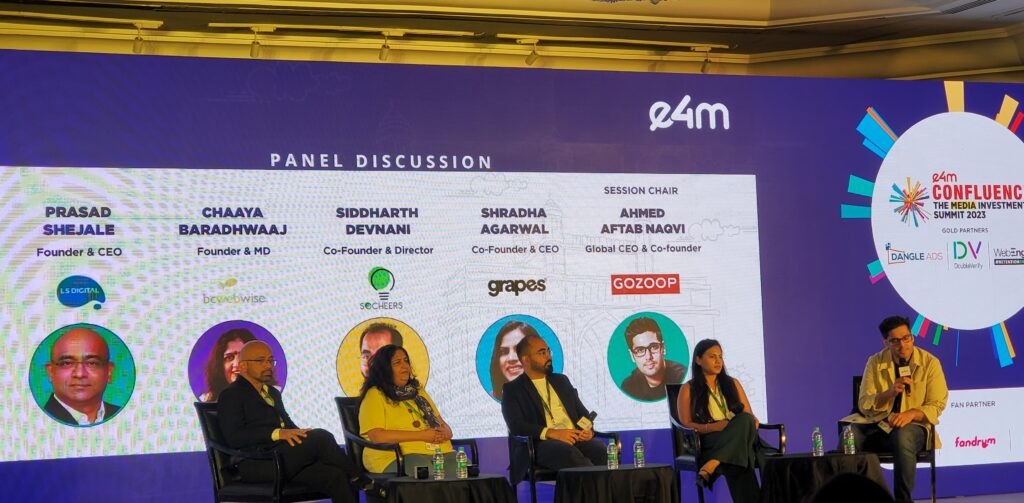
Chaaya Baradhwaaj said, “Independent agencies can provide more personalised attention and for us, the accounts are bread and butter. We as founders ourselves get involved in every account. On the other hand, we also hear the other agency did not deliver, were not up to the mark, and I think that is the primary reason why today we are well-poised.”
Another benefit of the founder being so close to the action is to track changes, and adding the tadka of strategic consulting on top of it at a free cost becomes very critical, added Shejale.
Speaking of challenges that Devnani’s independent agency has faced, he shared: “We repetitively have faced challenges on the brand value of the network agencies. So, when you think of it from the perspective of a brand manager, it turns out to be a very safe decision. It feels riskier to go with an independent agency rather.”
Agarwal added that there are challenges faced even by larger agencies. “I remember I was speaking to a large group and they said while offline agencies may enjoy 15-20 lakhs of retainer, digital should come from Rs 50,000 to four lakh of budget. So, some kind of remuneration benchmarking should come up when it comes to digital retainers.”
“Additionally, to get the right output, you need the right talent,” she added.
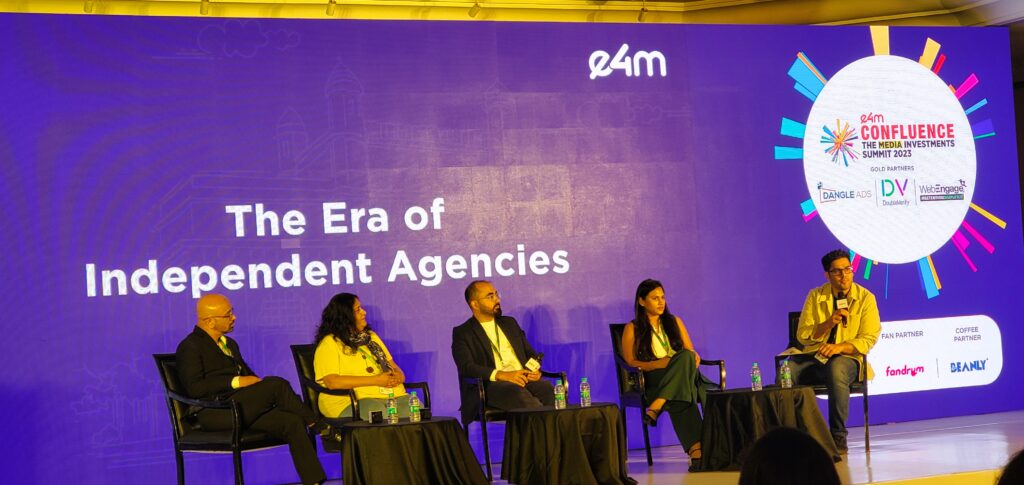
Towards the end, as a one-liner advice to independent agencies, the Grapes executive said, “If you want to scale, don’t work in the business, work on the business.”
“Stay hungry, stay foolish,” said Devnani. BC Web’s Baradhwaaj said, “We need to focus on the profitability of the agency to be able to sustain ourselves and scale.”
Shejale concluded the discussion with, “Don’t operate to make your agency big and then sell it off. It’s a tough business and big is beautiful.”

